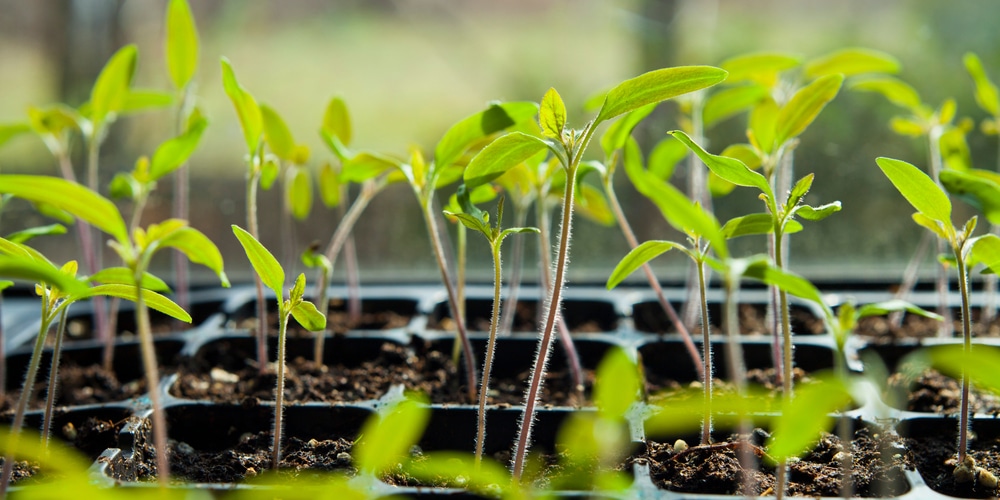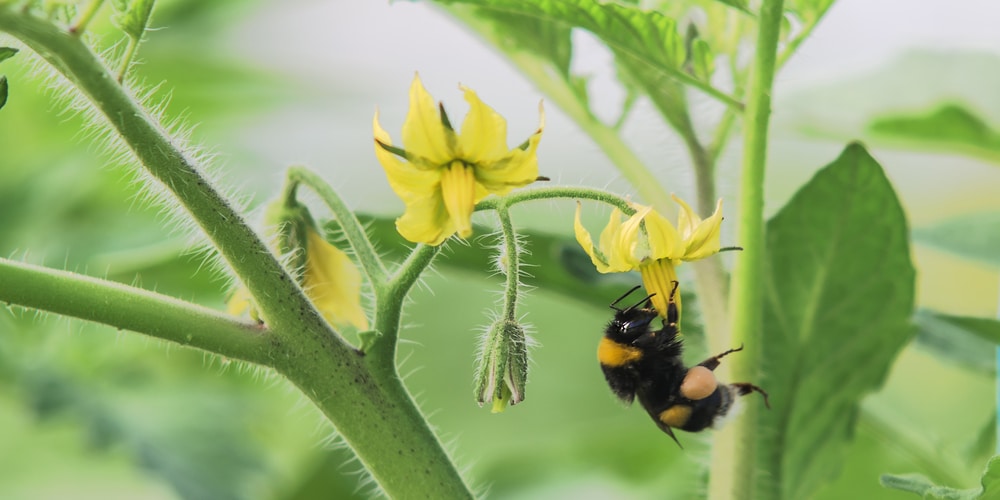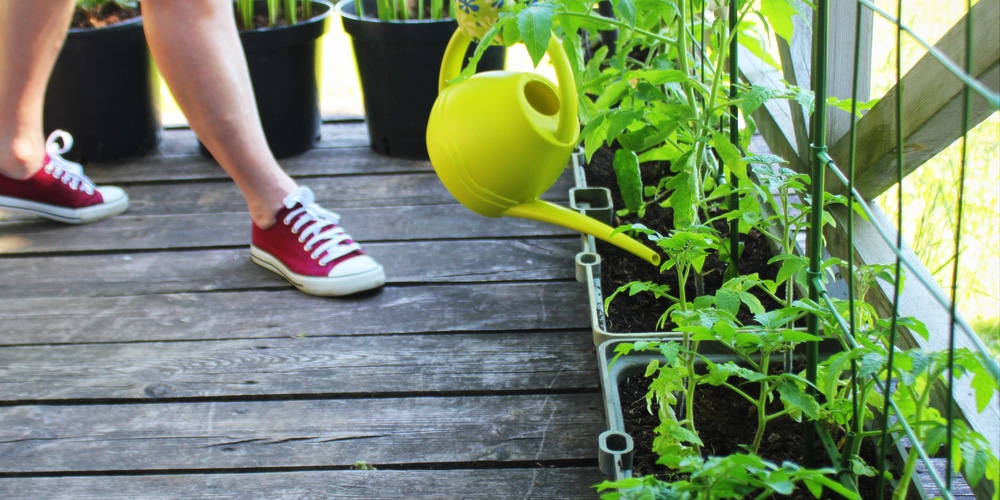It’s every gardener’s nightmare to see thin, fragile, and stretched-out stems on their tomato seedlings. It takes a lot of effort and time to prepare and plant these seedlings. Therefore, when they start to turn leggy, it’s normal to feel frustrated. For some plants, when the seedlings become leggy, there isn’t much you can do. Fortunately, there are ways you can save leggy tomato seedlings from dying. The first step is to identify what’s causing the legginess.
What Causes Leggy Tomato Seedlings?
1. Insufficient Light
The number one culprit for the leggy tomato seedlings is insufficient light. As your seedlings grow, they will gravitate towards light. If the light source is far away or too dim, these seedlings will kick into survival mode. Instead of developing the roots, the plant will put more effort into reaching the light source. That’s what leads to tall, thin, and fragile stems. If the seedlings are grown near a window, the stems may bend sideways and face the light.
2. Excess Heat
Tomatoes are heat-loving plants, but that doesn’t mean you should blast them with extremely high temperatures. When you do so, you will trigger a rapid growth that will result in skinny and weak stems.
3. Inadequate Water
Considering how vulnerable tomato seedlings are, they should be provided with adequate water. Failure to do that will result in weak stems. Make sure that there is enough water in the pot.
4. Overcrowding the Seedlings
Since the seedlings are tiny, you may think that you can crowd them to maximize output. But, overcrowding leads to competition for light. Each seedling will develop tall stems so that it can get enough light.
5. Lack of Ventilation
Seedlings grown indoors tend to have weaker stems because they are not receiving enough air. Compared to those planted outside that are used to strong winds, your seedlings may have fragile and skinny stems.
6. Excess Fertilizer
Fertilizer plays a critical role in the development of tomato seedlings. But too much fertilizer can put the seedlings in overdrive gear resulting in tall stems.
7. Starting the Tomato Seeds Very Late or Early
The last culprit for tomato seedling legginess is starting them too late or too early. Timing is critical when it comes to starting tomato seedlings. These plants aren’t cold-hardy. The frost will definitely kill them. The best time to plant tomato seeds is in Spring, when the weather is warm enough. Make sure that you check your local weather calendar and identify a suitable duration.
How to Fix Leggy Tomato Seedlings? (An Emergency Transplant)
Don’t lose hope if you are a victim of leggy tomato seedlings. There is a way you can rescue the seedlings from dying, and that is through an emergency transplant. Gardeners should never tire of transplanting tomato seedlings from smaller to bigger pots. As the seedlings grow, they often outsize the seed tray. Bigger pots provide enough room for each seedling to receive light, water, and nutrients, ensuring the stems are thicker, stronger, and of average height.
Below is a step-by-step guide on how to give your leggy tomato seedlings an emergency transplant.
Step 1 – Get a Bigger Pot
Find a bigger pot and fill it with fine potting mix. You need to ensure that the new pot will provide enough drainage.
Step 2 – Remove the Seedling
Gently remove the tomato seedling from the tray. Because the stems are weak, you need to be careful not to break them. The roots will be packed with soil. Loosen it before proceeding to the next step.
Step 3 – Transplant
Dig a hole in the potting mix by immersing at least three-quarters of your finger. Take the seedling and lay it across the hole. Ensure the part on top of the hole is divided into two; a third of the seedling comprising of the root and stem. And two-thirds containing the leafy part and stem.
For the transplant to occur, you will need to push the plant down into the hole. You can use your finger, but be very careful. Alternatively, you can use the top part of a pencil.
Push it down gently, ensuring the root is submerged with part of the stem. Fill the hole and water it. As the seedlings grow, the stem part was buried will become part of the plant’s roots.
Let the seedling become stronger before taking it outside. The stem will turn thicker and stronger as you water the seedling regularly.
Transplanting a tomato or a pepper seedling will save it from legginess. But, to ensure the seedlings are healthy and grow into stronger plants, you need to practice the following;
• Provide the newly transplanted tomato seedling with more light. Your seedling will stop gravitating to light sources once it realizes it doesn’t have to. The stems will stop shooting higher but instead grow thicker. Tomato seedlings require at least 12 hours of light for optimal development. Investing in grow lights can make this much easier to achieve.
• Check on the temperatures. Your seedlings should grow much stronger at a temperature of 65 degrees F to 70 degrees F.
• Water the seedling regularly. Spritzing the seedlings won’t provide the roots with enough water for proper plant development. Make sure water finds its way to the bottom of the pot.
• Occasionally brush or fan the tomato seedling stems. For seedlings grown indoors, there is no wind to harden the stems. It would be best if you created this scenario by running a fan or brushing through the stems from time to time. The plant will see the need for strengthening its stem, putting a stop to legginess.
• Finally, don’t forget to space the seedlings when transplanting them. There must be enough room of around three inches between the seedlings. This will minimize competition for light that results in legginess.
Why Are My Tomato Seedlings Leggy: Final Thoughts
It’s normal to panic when you see leggy tomato seedlings. But you don’t have to. An emergency transplant can save you from this disaster. When you bury a part of the stem, it will develop into roots. Also, when you introduce more light and implement the techniques mentioned above, you should fix the legginess.
You may also like: When to Transplant Sunflower Seedlings


